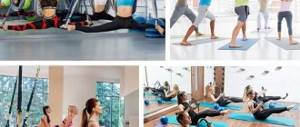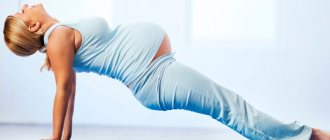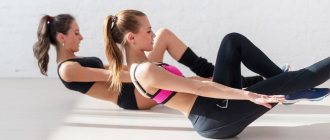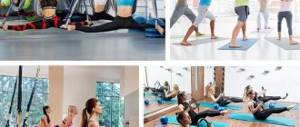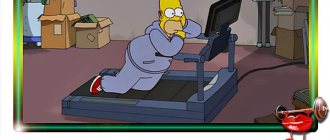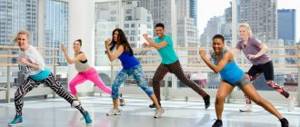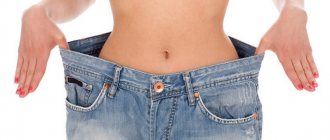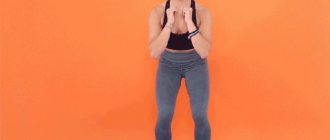In our open spaces, the system of improving the body and mind called Pilates began to gain popularity relatively recently. First as a fashion trend, and later due to its unique properties, it became a mandatory program in every major fitness center. Pilates compares favorably with other systems with its complex effect on the entire body and the almost complete absence of any contraindications. Therefore, people of all ages and with any physical form can begin to strengthen the body with the help of Pilates.
The quality of exercise is more important than the quantity
In Pilates, technique is very important. Three correct approaches will give you more benefit than twenty incorrect ones. It is because of unconscious movements that we develop various diseases of the back, joints and internal organs. Incorrect technique can aggravate this lack of awareness. Also, the techniques often suffer from one-sidedness, which leads to pain in the back, neck, and lower back. This happens because such techniques develop bulky muscles, leaving small ones inactive. In Pilates, no exercise leads to muscle imbalance.
Six principles of Pilates
Pilates is not only a set of physical exercises, it also contains a certain philosophical concept, consisting of six principles:
- Concentration. When performing Pilates exercises, it is important to concentrate as much as possible and monitor the movements performed - if sufficient attention is paid to the correct execution of the exercises, the result will not be long in coming.
- Control. In Pilates, all exercises are performed with mandatory movement control.
- Breath. During Pilates classes, deep, smooth breathing is used without delay. This type of breathing is called intercostal, inhaling through the nose and exhaling through the mouth. It is important that each exercise is performed strictly at the pace of breathing without pauses or delays.
- Centering. The basis of all exercises is the so-called “center of power”. During the entire workout, the abs should be tense and the spine should be straight.
- Accuracy. For Pilates, the quality of each exercise is important, not the quantity, so during training you need to monitor the correct body position and accuracy of movements. It is necessary that the shoulder blades and shoulders are on the same line.
- Traction. Before you start doing the exercises, you need to lower your shoulders and squeeze your shoulder blades together. It is important that the stretch is felt along the entire spine.
If these six principles are observed, classes will be effective, and the efforts made will not be in vain.
Pilates classes
- focused on improving the spine
- allow you to learn how to manage your body wisely
- tone and strengthen muscles, create a muscle corset
- develop balance and improve posture
- sharpen the lines of the body, giving the muscles a more elongated shape
- help cope with back pain
- develop the respiratory system
- help develop positive thinking in the fight against stress
The exercises are designed with an emphasis on developing muscle strength, especially strengthening the abdominal and back muscles, improving flexibility and mobility in the joints.
Pilates is self-control, health, grace and energy of a trained body!
Medical contraindications
Like any other form of exercise, Pilates is not for everyone. There are several diseases for which Pilates is not recommended:
- Fractures, ruptures and sprains. Pilates helps with rehabilitation after such injuries, but after healing. Otherwise, the situation may only get worse.
- Flat feet of the third degree, spinal injuries. The components of the “center of force” in such diseases cannot withstand even a mild load, which can lead to complications.
- Colds accompanied by a significant increase in temperature. In this condition, coordination of movements is impaired, which greatly increases the risk of injury.
- Significantly overweight and obese.
- Cardiovascular diseases.
A number of experts do not recommend Pilates classes during pregnancy due to the high loads that can be harmful to the mother and fetus. Nevertheless, a complex for pregnant women was developed. With its help, the muscles of the back and pelvis are strengthened, which is extremely important during pregnancy. Pilates also helps keep the body in shape and strengthen those muscles that bear the greatest stress during pregnancy. In this case, training takes place in a calm mode with minimal loads and tension. The main focus during training is on establishing the correct breathing technique - during childbirth, it can ease contractions.
We told you about what Pilates is for, its principles and features. Regular training with an instructor or at home will benefit your body and also give you a boost of energy and vigor for the whole day.
The GreenPortal team wishes its readers successful training!
Which is better - Pilates or the gym?
Classes in the gym are suitable for those people who want to:
- build muscle in a short time;
- quickly lose excess weight;
- exercise at an active and fast pace, feeling full impact.
Strength exercises help strengthen superficial muscle groups. To quickly get results, you will have to increase the weight of the equipment used - weights, dumbbells.
Pilates differs from strength exercises in that it helps to work not only superficial, but also deeper muscles. Many of them form a corset that supports correct posture. As a result, the condition of the musculoskeletal system improves, the spine acquires a healthy, natural curve. A pleasant bonus for every girl will be the acquisition of beautiful posture and a thin, flexible waist.
In addition to physical strength, endurance increases, joints become flexible and mobile. Exercises can be done by pregnant women and people who have suffered various injuries. Girls who want to get a beautiful figure, but at the same time remain flexible, can combine strength training in the gym and Pilates.
Pilates with sports equipment
Pilates for beginners is a fairly effective method to improve physical fitness, make your body stronger and stronger. Once the basic exercises become uninteresting for you, you can expand the lessons by adding sports equipment to the exercises.
So, what is most often used during training, read below.
Pilates for beginners with a ball
This equipment is already used with certain skills and preparation of your body. The essence is the same basic exercises, but for greater load and, of course, effect, use a fitball.
This helps improve posture, strengthen the back and abdominal muscles. Exercises are very effective for young mothers, as they help burn postpartum fat in the abdominal area.
See the blog for details about training with fitball
Pilates + roll
A roll is an elastic synthetic cylinder that can be purchased at any sporting goods store.
A roller, also known as a roller or yoga cylinder, is a very effective device that will not only pump up your body, but also perform a self-massage session, strengthen your back, and relieve tension and fatigue.
Such exercises improve coordination in space, perception, and retrain the nervous system, adapting it to more useful movements.
Pilates + ring
The Pilates ring is very effective. Indeed, thanks to its properties, namely stretching and compression, it can be used as a support or a means to increase the load on the muscles.
This raises tone and makes it possible to specifically work on underused or weak muscles of any category.
Pilates band
You can also use tape to achieve greater efficiency. This way you can fully develop your body and control the load on it. The tape helps to target specific muscles more precisely.
Power Pilates
This type of Pilates can be considered the highest level of all other methods. It is power Pilates that is very similar to a system such as callanetics.
It is worth noting right away that these two types of fitness include the use of equipment and additional loads for maximum impact on certain muscle groups. This type of Pilates is recommended for experienced and trained athletes.
What do you need to practice Pilates?
Pilates for beginners at home will have maximum effect if you are sure that you are ready to devote the time. Please note that you should not have any contraindications to physical activity.
To practice Pilates, you need:
- Desire and aspiration.
- Time - minimum 15 minutes.
- Sportswear.
Music is allowed during training. The main thing is that it is calm and does not distract from concentration on the exercises.
How is it different from yoga?
Despite the similarity of the exercises and the general desire to improve the health of the whole body, yoga and Pilates are two different areas of physical culture.
The general characteristics of these systems include:
- The desire for unity of the spiritual and physical.
- Static exercises without many repetitions.
- Developing flexibility, improving posture.
- Developing correct breathing.
- Improved balance and coordination.
Differences:
- Yoga has been created over thousands of years and has a more philosophical orientation, tied to ancient teachings and spiritual traditions. Pilates is a relatively young technique, but no less effective.
- Yoga focuses on stretching the muscles, while Pilates primarily focuses on strengthening them.
- Yoga is the path of self-knowledge through the study of your mind and body as a whole. Pilates is more focused on building a healthy body, and, as a result, improving the spirit.
- Yoga exercises do not involve movement. In Pilates, classes are more dynamic, but do not involve any overextension that goes beyond the natural capabilities of the body.
When choosing one direction or another, you should take into account the characteristics of each. It’s better to try both types to determine the most optimal type of activity for yourself.
Pilates at home
Pilates is an almost universal fitness routine that can be practiced even at home. In this case, you need to consider a basic system of exercises that can be performed without any supervision from a trainer.
See also on the blog: Pilates-style exercises for 5 minutes
Below we will talk about the exercises you need to know when practicing Pilates for beginners:
Warm-up
To do this, you need to lie down on a flat surface. Pull your knees to your chest, holding them with your hands, tighten your abdominal muscles and begin to inhale and exhale smoothly.
Then, without changing position, stretch your arms along your body, raise your legs bent at the knees and begin to twist both left and right, while trying to take several breaths and exhales.
Ab crunch
This will strengthen your abdominal muscles. Lying on your back, place your arms behind your head and begin to lift your torso, using only your upper abdominal muscles. You don’t need to help yourself with your hands or pushes, everything should happen smoothly. Pay attention to your breathing and focus on the exercise.
To pump up the lower muscles, you need to place a pillow under the buttocks, throw your arms behind your head, and begin to press your legs bent at the knees to your chest. Breathing is an important factor.
Plank
To do this, you need to lean on your elbows and align your torso with your toes. Having placed your body exactly from your heels to the top of your head, keep your body as straight as possible, but do not relax your stomach or hold your breath. Don't forget to suck in your stomach.
Training features and recommendations for beginners
This universal technique allows you to harmonize body and spirit. When performing exercises, you must adhere to the following rules:
- At the beginning of training, you should find your center of gravity.
- The muscles should be tense, the spine straightened and extended, forming an even, straight line. The navel should be pulled towards the spine.
- During training, you need to concentrate your attention on the movements, exercising with full dedication.
- Movements must be conscious and controlled.
- You should keep your posture straight and maintain your body in a symmetrical position.
Pilates cardio strength training is carried out in an intensive mode and involves the use of additional equipment - dumbbells, weights. During their execution, a large number of muscles are involved in the work. This type of training is preferred by professional athletes.
A beginner planning to start doing Pilates should find an experienced instructor who can ensure that the exercises are performed correctly. Anyone can practice at home by watching specially prepared video workouts. It should be remembered that the main secret to success in Pilates is maximum concentration. At the very beginning, it is recommended to exercise only with your own weight. Gradually you can start using a fitball, expander, and rubber balls.

